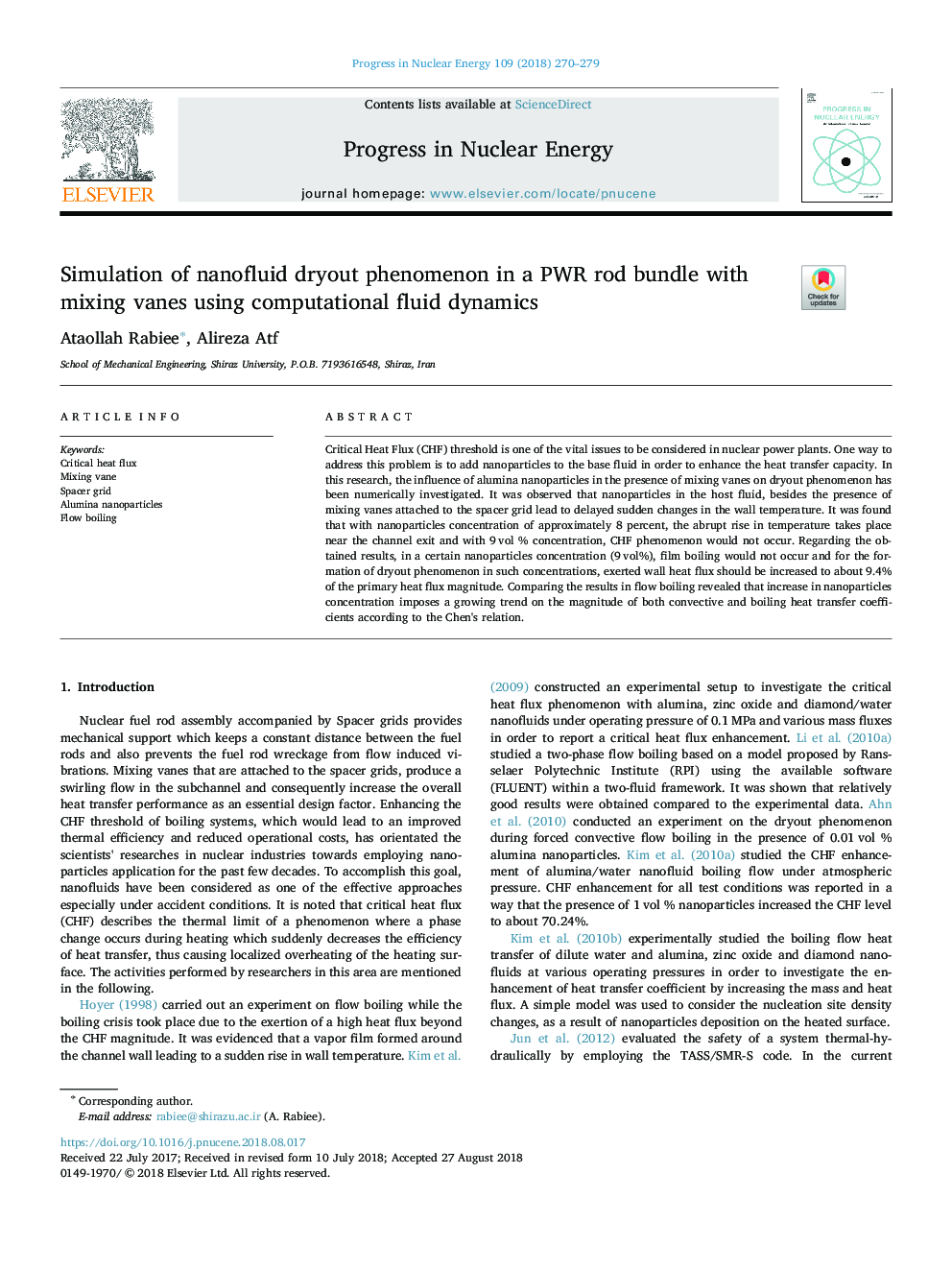| Article ID | Journal | Published Year | Pages | File Type |
|---|---|---|---|---|
| 11007432 | Progress in Nuclear Energy | 2018 | 10 Pages |
Abstract
Critical Heat Flux (CHF) threshold is one of the vital issues to be considered in nuclear power plants. One way to address this problem is to add nanoparticles to the base fluid in order to enhance the heat transfer capacity. In this research, the influence of alumina nanoparticles in the presence of mixing vanes on dryout phenomenon has been numerically investigated. It was observed that nanoparticles in the host fluid, besides the presence of mixing vanes attached to the spacer grid lead to delayed sudden changes in the wall temperature. It was found that with nanoparticles concentration of approximately 8 percent, the abrupt rise in temperature takes place near the channel exit and with 9â¯vol % concentration, CHF phenomenon would not occur. Regarding the obtained results, in a certain nanoparticles concentration (9â¯vol%), film boiling would not occur and for the formation of dryout phenomenon in such concentrations, exerted wall heat flux should be increased to about 9.4% of the primary heat flux magnitude. Comparing the results in flow boiling revealed that increase in nanoparticles concentration imposes a growing trend on the magnitude of both convective and boiling heat transfer coefficients according to the Chen's relation.
Related Topics
Physical Sciences and Engineering
Energy
Energy Engineering and Power Technology
Authors
Ataollah Rabiee, Alireza Atf,
